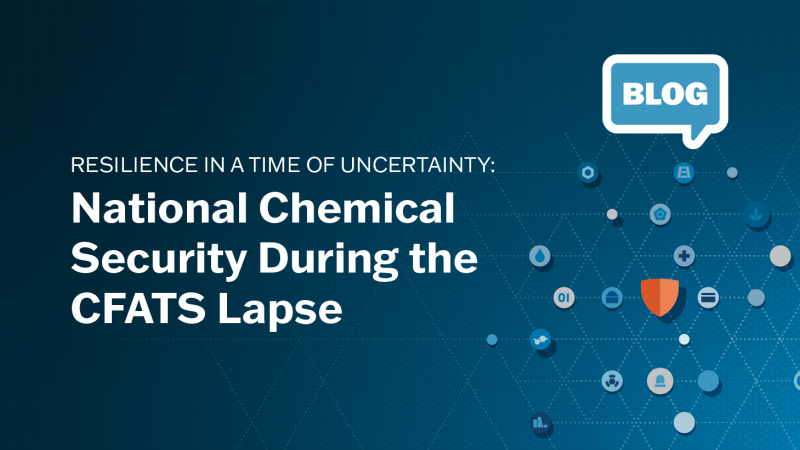Archived Content
In an effort to keep CISA.gov current, the archive contains outdated information that may not reflect current policy or programs.Celebrating the 15th Anniversary of the Chemical Facility Anti-Terrorism Standards (CFATS) Program
This Sunday marks the fifteenth anniversary of the establishment of the Chemical Facility Anti-Terrorism Standards (CFATS) regulations. Since the publication of the CFATS final rule on November 20, 2007, the Cybersecurity and Infrastructure Security Agency (CISA) and its predecessor have been committed to the mission of securing high-risk chemical facilities and the nation from the threat of chemical terrorism.
Securing our nation’s highest-risk chemical facilities and protecting the nation from the weaponization of chemicals is no easy feat. The growth of the CFATS program reflects this and its success has required foresight and commitment from the nation’s best security experts, risk analysts, and policy writers. It has also required purposeful and thoughtful partnership between the program and the regulated community to achieve security and risk reduction goals.
Through these partnerships, and the incredible work of the chemical security teams at CISA, the program has demonstrated that a novel approach to regulation can be a success. The nonprescriptive, risk-based CFATS regulation has led to the adoption of tens of thousands of security measures at high-risk facilities, from physical perimeters to cybersecurity, training, and exercises.
Over the course of the last 15 years, more than 40,000 facilities have reported their chemical holdings to CISA under the CFATS program. As of today, just over 3,000 of those facilities are considered “high risk,” though that number fluctuates regularly as facilities change their chemical holdings and modify their business practices.
Since the program began, we have conducted more than 14,000 inspections at high-risk sites and performed more than 10,000 compliance assistance visits. Today, more than 95% of current high-risk sites have approved security plans in place. When it comes to moving the needle on chemical security, CFATS is making a difference. Three out of every four high-risk chemical facilities implement new security measures in order to reach CISA’s standards, and those improvements are not inconsequential—on average, facilities increase their security measures by 57% between their initial security plans and the plans that are ultimately approved by CISA.
Over the past six months, under the vision and leadership of Associate Director Kelly Murray, CISA’s Chemical Security team has published a series of blogs and videos recounting the successes, and, at times, some of the growing pains that have helped the CFATS program become the global standard for chemical security. This series on the history of CFATS is available now at the CFATS 15th Anniversary webpage. I hope you will join me in taking a few minutes to learn more about the CFATS program, its history, and its impact. Additionally, I highly encourage you to set aside time this afternoon at 3 pm ET to join us live on Microsoft Teams for the Live CFATS 15 Celebration Event.It will feature members of the chemical security team, videos from staff who have contributed to the growth of the program, and a dialogue with some of our industry stakeholders.
I am proud to celebrate the 15th Anniversary of CFATS, as well as the 1st anniversary of ChemLock, CISA’s voluntary chemical security program, during Infrastructure Security Month. These programs, and the partnerships that form their foundation, truly speak to CISA’s ability to drive down risk and ensure the security of our nation’s chemical facilities. I look forward to celebrating the next fifteen years, and beyond, of CISA’s commitment to chemical security.





